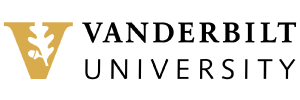Tissue Mapping Center
Biomolecular Multimodal Imaging Center for 3-Dimensional Mapping of the Kidney

Abstract
This application proposes the continuation of a Tissue Mapping Center (TMC) for the human kidney within the Human BioMolecular Atlas Program (HuBMAP). Our mission is to build a platform of integrated technologies for imaging and molecular analysis to enable the construction of comprehensive 3D molecular atlases of the human kidney. We will leverage the unique resources of the Mass Spectrometry Research Center and the National Research Resource for Imaging Mass Spectrometry at Vanderbilt University and Vanderbilt University Medical Center. In addition, we will utilize the resources of the advanced biocomputational infrastructure available through the Data Analysis Core laboratories at Vanderbilt University and the Delft University of Technology, Netherlands.
Through segmentation and cell type analysis determined by classical markers, we will correlate our molecular and clinical information to the existing knowledge of the kidney to better define the normal phenotypes across a range of diverse samples. The application of this multimodal pipeline to the kidney will provide a new paradigm of understanding the normal state of this organ across multiple dimensions, both molecular (e.g., lipids, metabolites, proteins, and transcripts) and spatial (e.g., whole organs to single cells). As a HuBMAP participant, the molecular atlases produced by this TMC will be disseminated to the community and to collaborators to generate new hypotheses regarding the function of this important organ system, enabling new insight into human health and disease. This multidisciplinary effort requires the creation and integration of three capabilities to: 1) procure and manage human tissue specimens; 2) determine and mitigate non-biological pre-analytical factors; and 3) acquire, process, and disseminate multimodal 3D imaging and large-scale omics data. The goal of the proposed kidney TMC is to create atlases for community users, physicians, and researchers to use as a guide to navigate the molecular landscape of the kidney, generate novel hypotheses, and tackle meaningful biomedical research questions. Our methods of integrating imaging mass spectrometry, highly multiplexed immunofluorescence microscopy, autofluorescence microscopy, stained microscopy, spatial transcriptomics, spatial proteomics, and single-cell RNA-seq to create comprehensive 2D and 3D molecular and cellular atlases of the human kidney will have a great impact on the research community.
Public health relevance statement
This application proposes the continuation of the Biomolecular Multimodal Imaging Center (BIOMIC) at Vanderbilt University, a Tissue Mapping Center associated with the Human BioMolecular Atlas Program (HuBMAP). The mission of BIOMIC is to build a platform of integrated technologies for imaging and molecular analysis to enable the construction of comprehensive 3D molecular atlases of human tissues. We aim to: 1) procure and manage human tissue specimens; 2) determine and mitigate non-biological pre-analytical factors; and 3) develop scalable multimodal imaging and deep multi-omic assays for the human kidney.
Fast Facts
| Project title: | Vanderbilt University Biomolecular Multimodal Imaging Center for 3-Dimensional Mapping of the Human Kidney |
| Organ specialty: | Kidney |
| PIs: | Jeff Spraggins Ph.D. |
| Co-Investigators: | Raf Van de Plas Ph.D., Joana Gonçalves Ph.D., Mark de Caestecker M.B.B.S., Ph.D., Agnes Fogo M.D., Raymond Harris M.D., Richard Caprioli Ph.D. |
| Project Manager: | Melissa Farrow Ph.D. |
| Assay Types: | MALDI Imaging MS, CODEX MxIF Microscopy, Autofluorescence Microscopy, GeoMx Spatial Transcriptomics, Spatial Proteomics, snRNA-sequencing |
| Grant number: | 1U54DK134302-01 |
| Learn more: | Visit the lab's website, and follow them on Twitter. |
